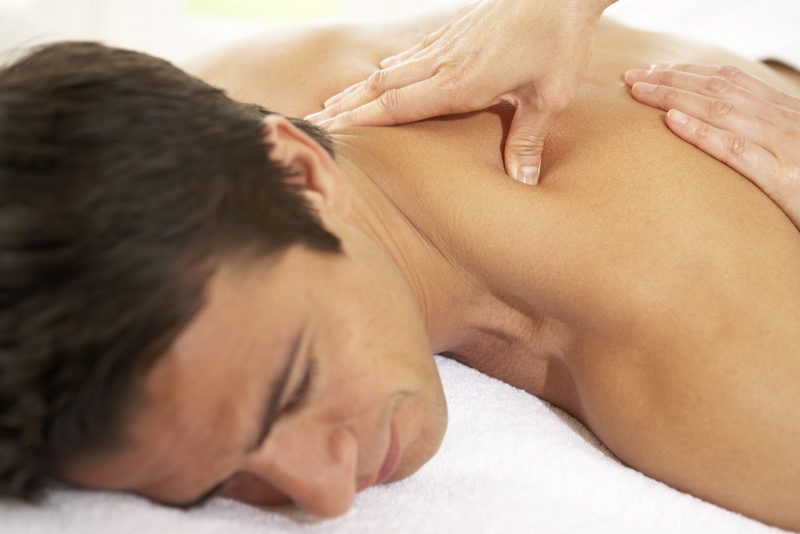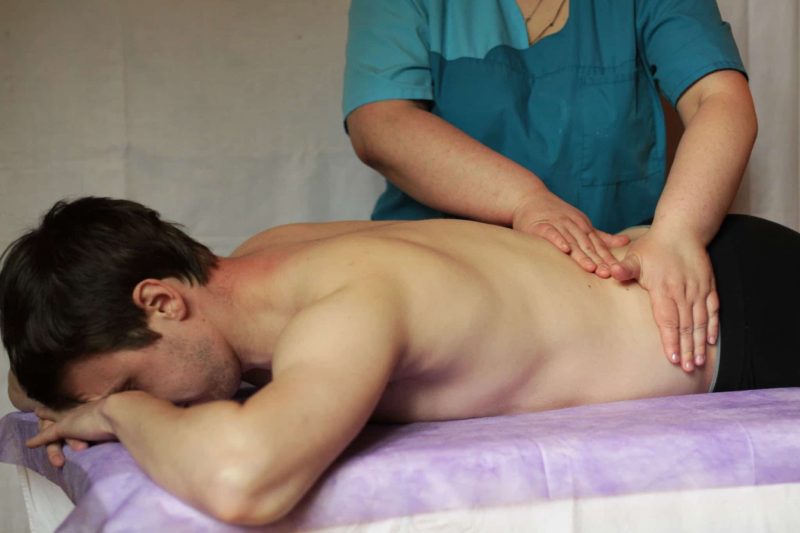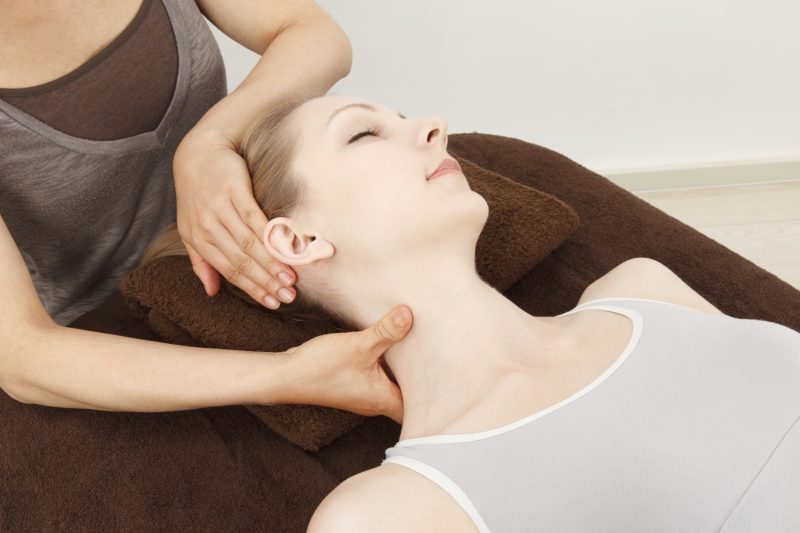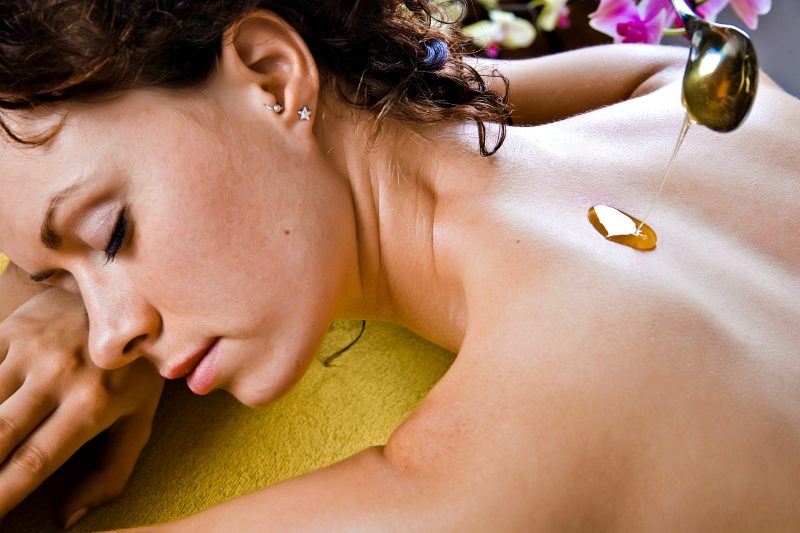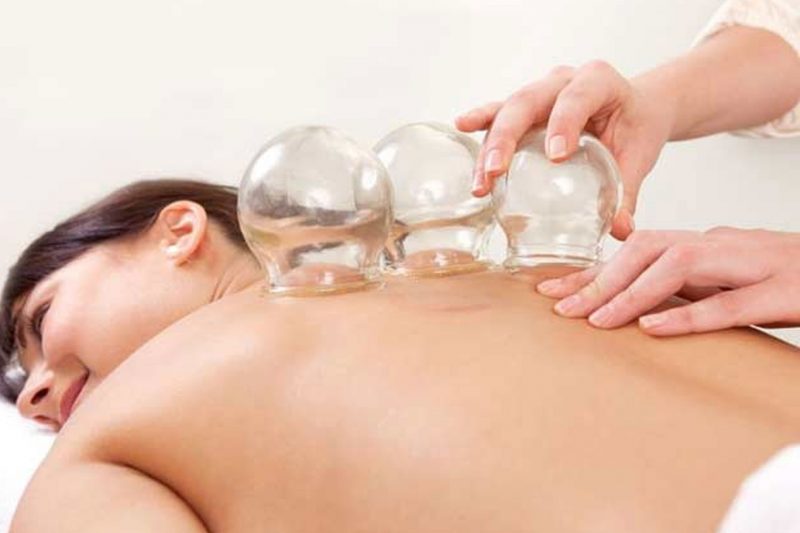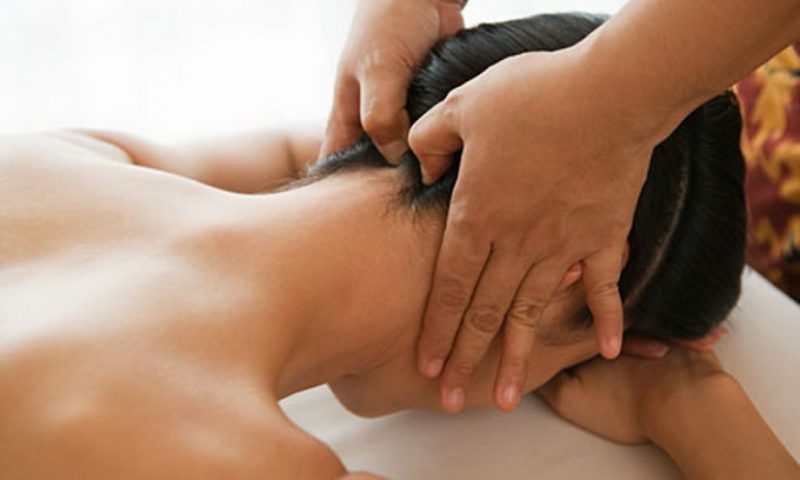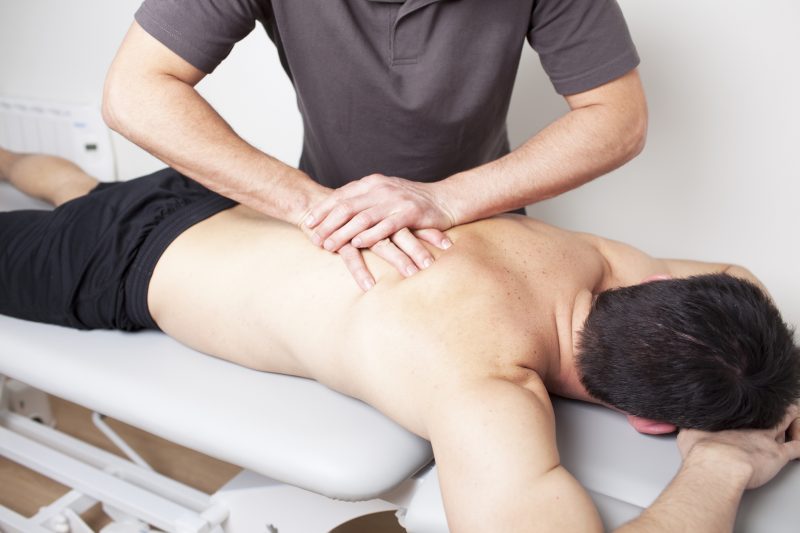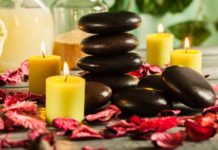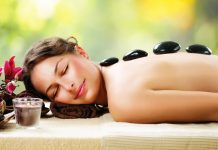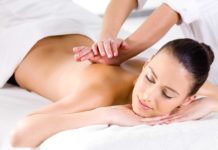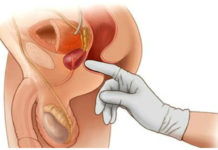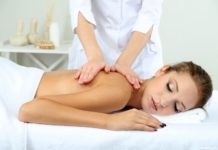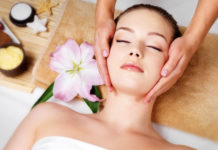Diseases associated with degenerative changes in cartilage, are collectively called osteochondrosis. Most often, the disease affects the spine. There are many causes of diseases, so treatment should be approached comprehensively. Therapy should not only include medical methods, but also special techniques of external exposure. For example, massage for osteochondrosis, which gives quick relief. This effect is associated with warming up the muscles and improving blood flow. However, in order to get the maximum benefit from the procedure, you need to know how to carry it out correctly.
Material Content:
Causes and symptoms of osteochondrosis
The cartilage tissue is nourished by the surrounding muscles penetrated by the blood vessels. It is in them that the main metabolic processes occur. If the blood flow in the tissues surrounding the spinal column is disturbed, the supply of cartilage and joints with nutrients deteriorates. In them, destructive processes begin.
Tissues become thinner and lose elasticity. When bulging the fibrous ring in the intervertebral space, hernias and cysts are formed. The joints of the vertebrae become less mobile. Disks are compacted. Pinched nerve endings cause discomfort and pain.
More often, the symptoms of the disease appear after 35 years, which is facilitated by hormonal changes in the body and age-related changes that occur in the circulatory system.
The factors for the appearance of osteochondrosis include:
- Genetic predisposition.
- Overweight.
- Improper nutrition, in which a deficiency of the elements necessary for the body develops.
- Excessive physical activity and low mobility.
- Continuous hard work associated with the repetition of the same type of movements, in which the load on the body is distributed unevenly. For example, tilts or turns in one direction.
- Bad environmental conditions.
- Flat feet. The influence of this factor is explained simply. With an incorrectly formed arch of the foot, it will not be able to fully perform the function of depreciation. When walking, vibration will be transmitted to the spine. Under the action of increased loads, the discs become denser, which will cause osteochondrosis.
- Spinal injuries.
- Curvature of posture.
- Completion of a sports career.
- Stress.
Osteochondrosis of the spine is localized in the cervical, thoracic and lumbar spine. It manifests itself as constant aching pain, impaired mobility of the limbs, tingling and numbness in the hands. When the nerve is pinched, acute pain occurs, which intensifies with deep breathing, turning or coughing.
Cervical vertebrae can pinch the vertebral artery, which leads to exacerbation of heart disease, the appearance of tinnitus, headache, dizziness. There is the effect of flickering flies in front of the eyes.
You need to approach the situation comprehensively. With osteochondrosis, medical anesthesia is used. A set of physical exercises helps to strengthen the back muscles, relieve stress from the vertebrae, and straighten the shape of the spine. Physiotherapy improves blood flow at the site of inflammation, helps restore tissue resources.
Massage is also part of rehabilitation therapy. It warms up, enhances blood flow in the muscles surrounding the vertebrae, restores tissue tone, reduces inflammation and helps reduce pain. In addition, the procedure gives a general strengthening effect.
The basic rules of massage procedures
Massage, of course, is useful, but if the conditions of fulfillment are not observed, it can do much harm.
The procedure is never performed during the acute stage of the disease, otherwise, against its background, pain can only intensify.
The duration of treatment is an equally important factor. Events are held in courses from 4 to 10 sessions. The only way to achieve a lasting result.
During the massage, the painful parts of the body should be completely relaxed. When massaging the neck, the patient may occupy a sitting position with support on his hands. If osteochondrosis of the lumbar spine is diagnosed, the patient is laid on his stomach and stretches his arms along the body.
The intensity of manipulation increases gradually. Massage begins with warming up the muscles with light strokes. The main movements are transferred to the final stage of the procedure. Complete the action with gentle soothing movements. The heated area is covered with a warm blanket. The patient is left alone for several minutes.
During the massage, only the muscles surrounding the spinal column are worked out. They do not exert pressure on the vertebrae. All movements performed should be light, smooth, not painful.
They begin the procedure by warming up the tissues surrounding the painful area, and finish with the study of the problem area itself. The trajectory of movements must coincide with the direction of the lymph current.
Types of massage
Some types of massage for a momentary relief can be performed at home, but if the doctor insists on a certain course, then you should consult a professional.
Classical
The classical massage technique is based on the knowledge of anatomy, so an unprepared person will not be able to perform such a procedure easily.
The session lasts about half an hour and consists of several stages:
- First, there is a light stroking that prepares the skin and muscles for the procedure. Such manipulations help the patient relax as much as possible.
- Then the doctor proceeds to rubbing, preceding the main load on the muscles. The intensity of manipulation increases with time, and the skin of the back becomes red and hot.
- After two stages of preparation, the specialist begins to stretch the muscles, making the greatest efforts. He is actively working on all problem areas. At this stage, the intensity of the action is selected individually. Movement should be strong, but not painful.
Before performing a back massage, you should determine the direction of movement. Since lymph flows from the neck to the inguinal and axillary nodes, the main efforts should be directed from the neck to the lower back and from it along the shoulder blades to the shoulders.
The preparatory stage begins with light stroking the entire palm from the lower back to the neck and then through the shoulder joint. Do 4-5 approaches, alternating with squeezing movements, in which the palm is pressed a little harder on the skin. At this stage take no more than half a minute.
Rubbing is performed along and across the spine with sawtooth movements.
The following techniques are used:
- Palm put edge on.
- They lay it completely on its back and crush it with spread out fingertips.
- Stacked in a fist, knuckles pressed on the skin. This technique is called comb-shaped.
Movements are made with two hands simultaneously in one direction or alternately as if the hands alternately catch up with each other. Performing a comb-like technique, you can draw circles or move in a spiral. For each movement, 5-7 approaches are arranged.
They work out the muscles with the following manipulations:
- Rolling. The thumb of the palm is taken to the side. Bent phalanges sort out the skin, moving from bottom to top. Movements alternate with fan-shaped strokes with a flat palm with spread fingers, which move up and down. Performing reverse movements, you need to slightly pinch the skin.
- Kneading. It is performed by the fingertips, resting the whole palm on the back. The fingers are slightly bent. Press along the spine in a circular motion. Rearrange the palms below and repeat the reception. A stronger effect is obtained by pressing the palm itself.
- Two-handed rolling. The palms are placed at the maximum distance from the spine. At the same time, with both hands they describe circles in opposite directions.
- Finger saw. Hands are laid on the back on either side of the spine. Thumbs and index fingers are included in the work. Fingers of one or another hand go up alternately. Thus moving along the entire spine. The longest stop at the most problematic places.
After working out the soft tissues along the entire column, trapezius muscles are kneaded. Then they move to the latissimus muscles. Fingers grab the skin like tongs. They use a kneading technique with weights: they put one hand on the other, the upper palm helps to move the fingers of the lower palm. The most painful areas can be worked out again with a finger saw. All movements are repeated 8-12 times.
The kneading result is fixed by vibration tapping. The palm spreads out fan-shaped. Quite strong quilting movements make it. Tapping can also be done with finger crests. In this case, the palm should be folded into a fist.
At the end of the procedure, the skin is calmed with light strokes for 5-7 seconds. At this stage, anesthetizing gel or ointment can be rubbed. The patient is covered with a towel and left to rest.
It is interesting:cervical osteochondrosis: symptoms and treatment
Honey
Honey is a natural antioxidant. It removes toxins, enriches the skin with vitamins, shows a mild analgesic effect. It plays the role of an accelerator of metabolism.
The session lasts about half an hour. Massage is performed on clean and dry skin. Honey should be warmed to body temperature. The procedure, as in classical massage, begins with light strokes.The warm mass is distributed throughout the body in an even and thin layer.
Forceful effect consists in tearing the palms from the skin. First, you need to give the patient to get used to the sensations. The palms are laid perpendicular to the spine and peel off with light wavy movements. The base of the palm rises first. Lastly, fingertips come off.
Hands are applied all over the back. In the area of the spine itself, the pressure should be minimal.
Over time, the intensity of movements is enhanced. Palms tear off sharper. At this stage, redness appears on the skin. Massage should not cause pain. If necessary, they switch from sudden movements to smoother ones. The main techniques periodically alternate with stroking.
The procedure lasts 12-15 minutes. During this time, honey changes its consistency. It rolls down and turns into a dense whitish mass, which indicates that the effectiveness of the procedure has reached its peak. Beneficial substances penetrated the pores to the maximum depth.
At the end of the session, you can wrap your back with a blanket. In this position, you must spend another 5 minutes. The remnants of honey are removed with wet wipes. At the request of the patient can take a shower.
Using cans
Cupping massage is also called vacuum massage. It is performed using medical jars of various designs: glass, ceramic, rubber. A vacuum is created in each container, due to which the skin is drawn inward. This gives a very strong therapeutic effect. Tissues are heated, saturated with blood. The outflow of lymph is normalized. Pass stagnation. Pain is reduced.
The procedure is performed in two stages. The first is on dry skin and consists of classical massage techniques: stroking, rubbing, kneading. It is designed to prepare the skin and muscles for further action.
When hyperemia appears on the body, they begin basic manipulations. The back is liberally lubricated with massage oil or a fat cream, after which they put a jar, which is taken along the back along the massage lines, moving from bottom to top. To avoid capillary injury, do not stay in one place for a long time. Processing must be alternated with regular strokes.
The main part of the procedure lasts 10-12 minutes. The skin at the end of the session becomes red and hot. The appearance of this sign indicates the effectiveness of the procedure.
Cupping massage can be repeated for 4-7 days.
Point impact
Acupressure is used as an auxiliary method. They can fix the results of a classic massage or relieve a sudden pain. This is one way to help yourself independently with a disease such as osteochondrosis of the cervical spine.
Massage is performed by circular pressure with fingertips on acupuncture points:
- Above the second cervical vertebra. With pressure, headaches, edema of the muscles of the collar zone go away, the mobility of the cervical vertebrae improves.
- The next point is two centimeters below the occipital protrusion. Its stimulation relaxes the muscles of the neck.
- To improve blood circulation in the tissues of the cervical spine helps pressure on a point in the region of the 5th vertebra.
- Stimulation of a point located in the middle of the lateral cervical muscle helps relieve cramping in this area.
- A point at the level of the 7th vertebra is responsible for the flow of blood. Her massage helps to relieve pain.
Each mark must be pressed no longer than one minute. Acupressure of the neck with osteochondrosis brings relief immediately after the session.
Massage Efficiency
All types of massage help relieve tightness, normalize blood flow and metabolism. Procedures help strengthen muscles, increase joint mobility, eliminate cramping and even posture.
Back massage for osteochondrosis accelerates lymph, removes fluid congestion, reduces the severity of inflammation and helps to overcome pain.The procedure helps to increase overall tone and strengthen immunity.
What are the contraindications?
Therapeutic massage is contraindicated in the active stage of the disease, accompanied by severe pain. The procedure cannot be carried out during the development of the infectious process, especially if the patient has a fever.
Contraindications to massage are viral, bacterial and fungal skin lesions with the formation of a rash or pustules. If there are warts or moles on the treated area, massage should be done very carefully, being careful not to damage these formations.
Osteochondrosis is best treated in the initial stage of the disease, so when the first signs appear, do not delay with an appeal to a specialist. An integrated approach and compliance with all medical recommendations are the key to well-being and quick healing.


